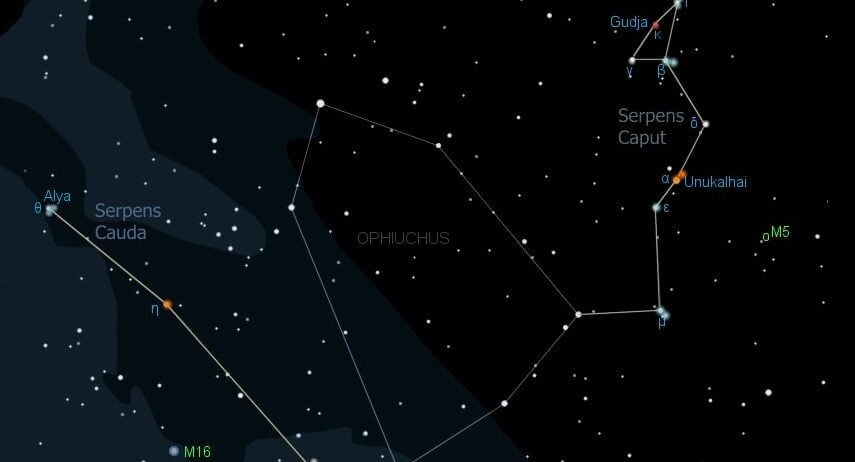From the beginning of the year until October, the constellation known as Serpens can be seen in the night sky of Russia. This expansive constellation, which stretches from north to south, is typically associated with the summer months, with the best time for observation being in July and August. The Serpens constellation is intersected by the celestial equator, and in its southern region, it is crossed by the ecliptic, which represents the path of the Sun in the sky. As a result, Serpens is classified as both an equatorial and zodiacal constellation. Lastly, a strip of the Milky Way can be seen along its eastern border.
Due to these various factors, amateur astronomers find the Serpentine constellation to be highly intriguing. There is an abundance of captivating celestial objects that can be observed using small amateur telescopes, including globular star clusters, planetary nebulae, and a multitude of variable and double stars. Additionally, the renowned Barnard’s Flying Star can be found within the Serpentine. Furthermore, the star fields in the southeastern region of the constellation exhibit breathtaking beauty, even when viewed through binoculars.
Serpentine: a concise overview of the constellation
Serpentine is one of the most ancient constellations visible in the night sky. Its origins can be traced back to the works of the renowned ancient astronomer Eudoxus (approximately 410 – approximately 350 BC) and his treatise called Phaenomena, which means Apparitions. In this treatise, Eudoxus meticulously documented the celestial bodies and described 44 constellations of the northern hemisphere. Serpentine, with its distinctive shape, was one of them.
However, it was the poem named Serpentine, written by Aratus (approximately 310 – approximately 250 BC), that truly brought fame to this constellation. Aratus drew inspiration from Eudoxus’ treatise and crafted a poetic masterpiece that celebrated the beauty and significance of Serpentine in the night sky.
The Serpentine is situated west of the Summer Triangle, which is the prominent constellation in the summer night sky. It stretches from the constellation of Hercules to the constellation of Scorpius in a north-south direction. To the east and west of the Serpentine, it is adjacent to the constellation of the Serpent, which, according to ancient astronomers, is held in the hands of the Serpentine. (Ptolemy included the Snake as part of the Serpent constellation.)

The Serpentine constellation is adjacent to Sagittarius in the southeast, Libra in the southwest, and the Eagle constellation in the northeast.
Spanning an area of 948 square degrees, Serpentine is the 11th largest constellation. Every year, the Sun appears in Serpentine from November 30 to December 17, passing along its southern edges. The paths of the Moon and planets also cross through this constellation.
The Latin name for Serpens is Ophiuchus, which is also its English name. The abbreviation for Serpentor is Oph.
The Serpentine constellation is composed of a large irregular pentagon shape, consisting of stars ranging from second to third magnitude. The brightest star in this pentagon is Ras Alhage, also known as alpha of Serpens. It is accompanied by Ras Algeti, a star from the neighboring constellation Hercules.
Just below and to the left of Ras Alhage, there is the star Beta Serpens, also known as Celbalrai. To the right and below the main star, there is the star kappa (κ) of Serpens. Collectively, these three stars form a relatively large triangle.

Located south of α, β, and κ in the Serpentor constellation are three additional stars that form the foundation of a pentagon. Positioned below and to the left of beta is the star Sabik (or η in Serpentor), while below and to the right of kappa is the epsilon of Serpentor, also known as Yed Posterior. Situated between the stars Sabik and Yed Posterior is the star ζ in Serpens, which is notable due to its high velocity in space and potential departure from our galaxy in the future.
To the right of Yed Posterior, in close proximity, lies the lambda (λ) star of Serpens, alternatively referred to as Marfik. Lastly, in the lower left corner of the constellation, positioned slightly above the horizon is the star theta (θ) of Serpens.
Serpentine: myths and legends
In ancient Greece, and later in Rome, the constellation of the Serpent was commonly associated with Asclepius, the adept healer who eventually became the deity of healing. According to mythology, Asclepius (known as Aesculapus in Roman mythology) was the offspring of Apollo and the nymph Coronida. From a tender age, he received education from the sagacious centaur Chiron, who imparted his knowledge of animal and human healing to him.
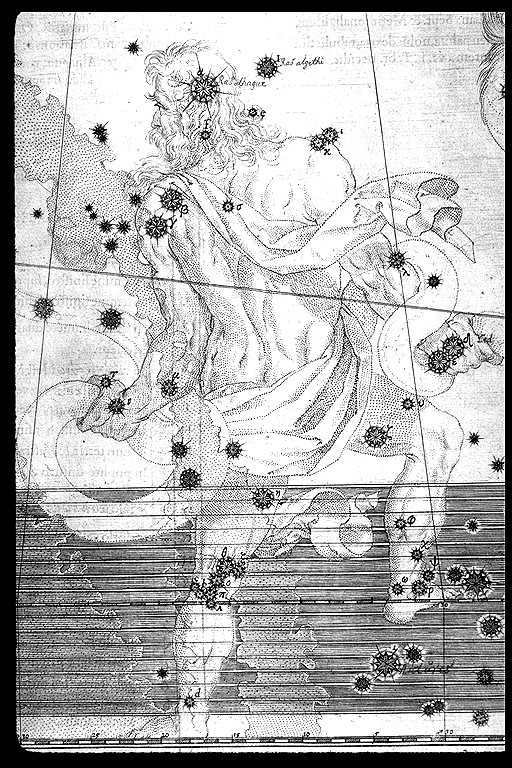
According to Homer, Asclepius took part in the well-known Argonauts’ Odyssey, accompanying Heracles and Jason on their quest to retrieve the golden fleece as the expedition’s medical expert. Asclepius excelled in the field of healing, possessing the ability to cure any ailment and even revive the deceased.
Legend has it that this exceptional skill ultimately led to his downfall. When death ceased to exist on Earth, the god of death, Thanatos, lodged a complaint against Asclepius to the supreme deity Zeus. Recognizing the disruption of the natural order, Zeus punished Asclepius by striking him with a bolt of lightning.
How to spot the Serpentine constellation in the night sky
The Serpentine constellation can be seen in the night sky for most of the year, except for November and December when it is hidden by the Sun. In January and February, you can observe the Serpentine rising in the east during the early morning hours, just before dawn. From March to April, the constellation rises after midnight and remains visible until sunrise. In May, the Serpentine appears in the evening and stays visible throughout the night, reaching its highest point in the southern sky before dawn.
The optimal time to observe the Serpentine constellation is during the summer months. During this time, you can spot it in the evenings and throughout the night, particularly in the southern and southwestern parts of the sky.
In the autumn, the Serpentine can only be observed in the western sky for a few hours in the evening.
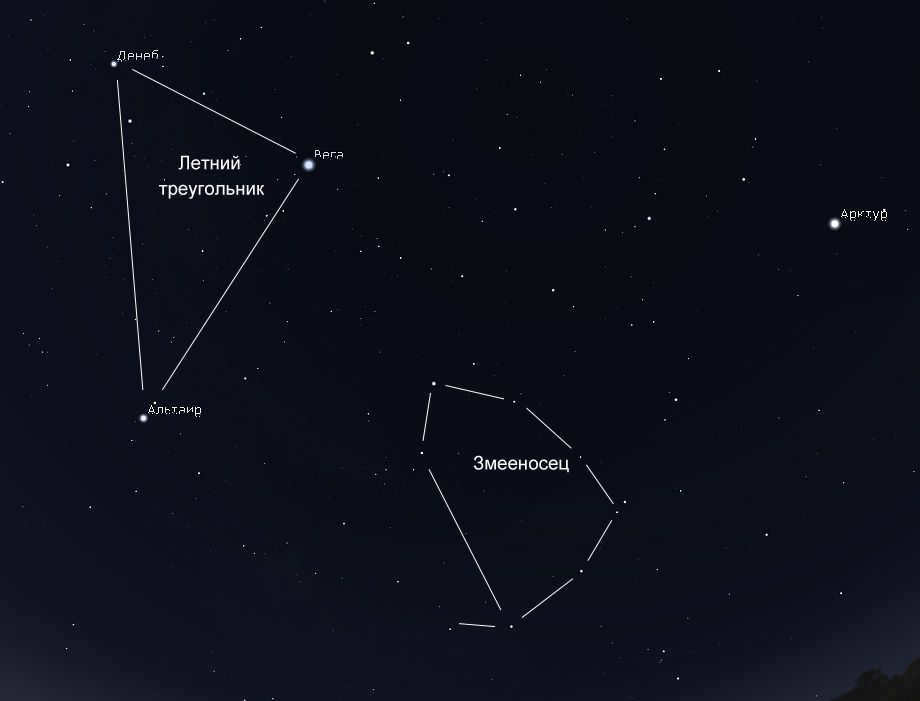
If you are searching for the Serpentine constellation, you can utilize the guidance of the luminous stars. This celestial formation can be found in the vast expanse of the sky, situated between the star Arcturus and the Summer Triangle. Arcturus, which is the most brilliant star in the northern celestial hemisphere, can be found to the right and above the Serpentine. On the other hand, the Summer Triangle, which consists of the three brightest stars Vega, Deneb, and Altair, can be observed to the left and above the Serpentine.
The process of searching is made easier by the following method. The Serpentine pentagon can be conveniently located starting from its brightest star, Ras Alhage, which is located at the top of the pentagon. However, Ras Alhage also forms an almost equilateral triangle with Vega and Altair. As a result, it is most convenient to first locate the main star of the Serpentine using the stars of the Summer Triangle, and then proceed to locate the rest of the constellation.
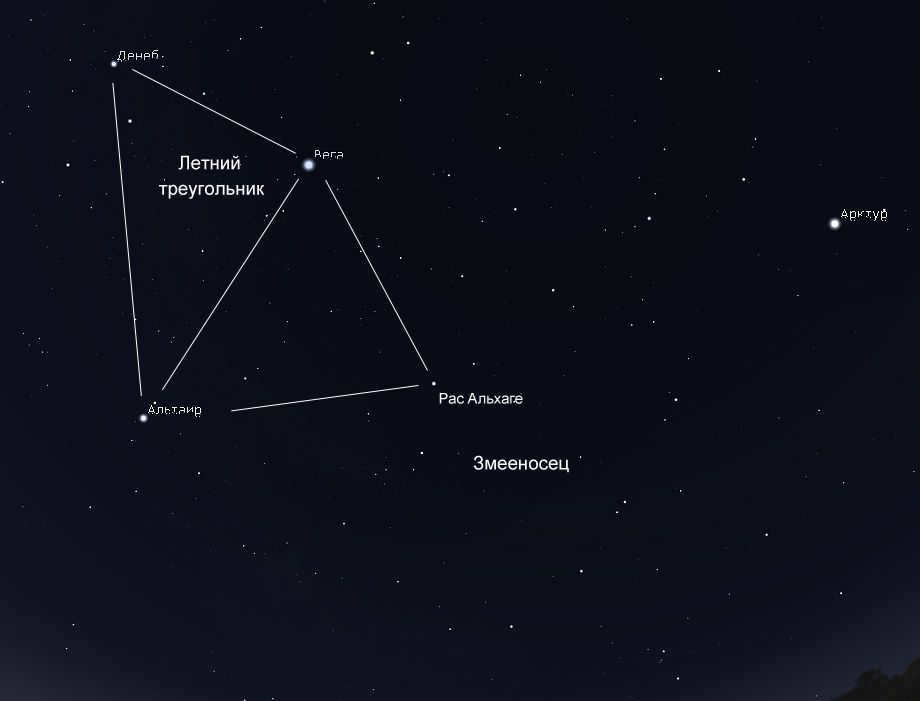
Stars in the constellation Serpentes
The constellation Serpentes is home to just two stars that are relatively bright. These stars are Ras-Alhage (α of Serpentor), which has a magnitude of 2.07, and η of Serpentor, which has a magnitude of 2.43. Additionally, there are seven stars in Serpentor that have a magnitude of the third order, and 16 stars with a magnitude of the fourth order.
These 25 stars can be observed in the night sky within urban areas, as long as the eyes are shielded from the direct light emitted by street lamps and the sky is clear and free of moonlight. Beyond the city limits, a multitude of faint stars with a magnitude of the fifth and sixth order will be visible, increasing the total number of stars visible to the naked eye to between 100 and 170. The exact count will depend on the prevailing conditions and visual acuity.
Alpha of Serpentine
Ras-Alhage, also known as the alpha star of the Serpentine constellation, is the most luminous celestial body in the constellation. Its name, derived from Arabic, translates to “The head of the snake charmer”. With a magnitude of 2.07, it is classified as an A5III spectrum white giant. Its coordinates are approximately 17h 34min 56s for ascension and +12° 33′ 36″ for declination. The distance between Ras-Alhage and Earth is about 48.6 light-years or 14.9 parsecs. Ras-Alhage shines 25 times brighter than the Sun and has a mass 2.4 times greater than our own star.
Astronomical observations, along with adaptive optics, have revealed that Ras-Alhage is a binary star system. The companion star is a small orange star with a spectral class of K and a mass of 0.85 solar masses. The two stars orbit around a common center of mass with a period of 8.62 years, and the major semi-axis of their orbit measures 0.43 seconds of arc.
The Serpentine’s β Star
Situated in the southeast of Ras Alhage, the 5th brightest star in the constellation is known as Beta Serpens (2.76 m). Beta Serpentor, an orange giant with a spectral class of K2III, possesses a diameter 12 times larger than that of the Sun and a luminosity 63 times greater. Surprisingly, its mass is only 1.1 times that of the Sun. As the evolution of stars is primarily influenced by their mass, studying stars like Beta Serpens allows us to gain insights into the future of our own star.
The distance to Beta Serpens is equivalent to 81 sv years.
ζ of the Serpentine
Zeta Serpens (with a brightness of 2.57 m ), is the third most luminous star in the constellation, situated in the southern region at the center of the pentagon, which forms the primary pattern of the Serpentine.
ζ of Serpentor is an enormous, highly potent, and scorching star, belonging to the rare O spectral class. The star has a mass that is 20 times greater, a diameter that is 8.5 times larger, and a luminosity that is 90000 times more powerful than that of the sun! The star’s age does not exceed 3.5 million years. It is estimated that there are no more than 60000 stars similar to ζ Serpentine in our galaxy.
Zeta Serpens is quite distant from us, with an estimated distance of at least 365 light years. It is nearly 7.5 times farther away than Ras Alhage.
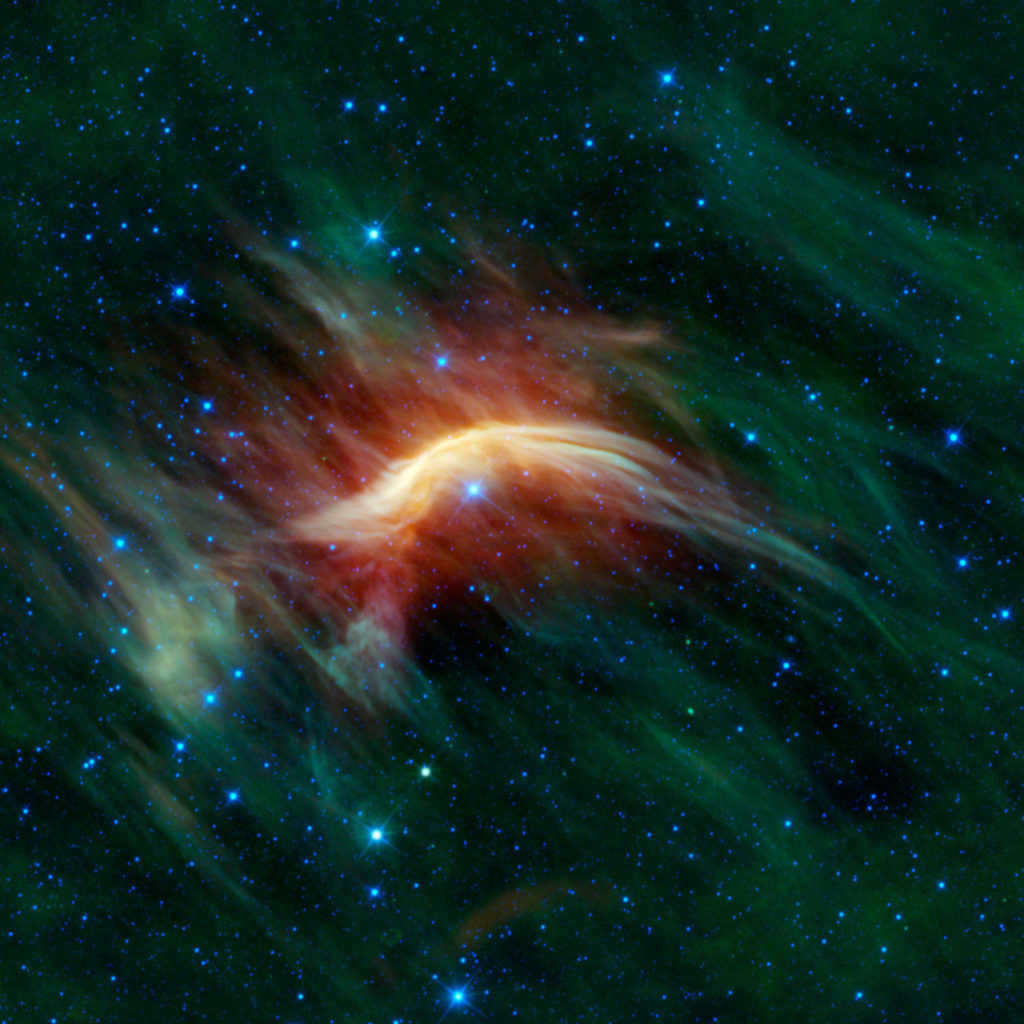
“Barnard’s flying star
An inconspicuous star, imperceptible to the naked eye, possessing a luminosity of 9.54 m, can be found in close proximity to the beta of Serpentor. Its most notable characteristic is its incredibly swift motion across the celestial sphere. Over the span of a year, this star undergoes a displacement of 10 angular seconds, a change that is readily apparent when observed through amateur telescopes. In a period of 180 years, Barnard’s star traverses a distance equivalent to the apparent diameter of the Moon (30 arc minutes or 0.5°)!
Barnard’s star is classified as a M4V red dwarf. It possesses a mass of merely 0.17 solar masses and a radius less than one-fifth that of the Sun. The star emits approximately 250 times less light than our own Sun, with the majority of its emissions occurring within the invisible infrared range of the electromagnetic spectrum.
Barnard’s star stands out not only for having the largest proper motion among stars, but also for being one of the closest stars to the Sun. It is located a mere 6 light-years away, making it the second most distant star after the triple star system Alpha Centauri.
Fascinating Objects in Serpens
The constellation Serpens is home to a multitude of intriguing and stunning celestial objects. Among them, the bright globular star clusters M9, M10, M12, and M14 deserve special mention. These clusters are easily observable even with amateur telescopes. However, two other noteworthy clusters, M19 and M62, are situated in the far south of Serpens and are therefore difficult to observe from Russia.
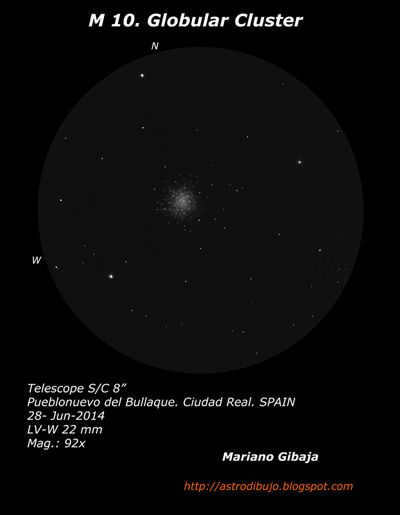
The constellation’s beta star is located near the 70th of Serpens, which stands out among the double stars. 70 Serpentor consists of a pair of orange dwarfs that are separated by a distance of 4″. These stars complete one revolution around a common center of mass in a period of 88 years. It is worth noting that 70 Serpens is one of the star systems closest to us, and both of its member stars are physically nearby the Sun. It is possible that there are inhabited planets near them, where intelligent beings reside.
Additionally, the focus is on the NGC 6572 planetary nebula, situated in the dense part of the Milky Way near the Barnard star and 70 Serpentine. Uncovered by the inaugural director of the Pulkovo Observatory, V. Ya. Я. Struve, this peculiarly shaped nebula possesses a luminosity of approximately 8 m, enabling its observation through compact telescopes.
The Serpentine’s Milky Way
One of the most stunning sights in the summertime sky is the expansive strip of the Milky Way that stretches across the constellations of Cygnus, Aquila, Scutum, Serpens, Sagittarius, and Scorpius. This region represents the plane of our Galaxy, where the majority of stars and cosmic clouds made up of gas and dust are concentrated.
On a clear, dark night, the Milky Way reveals its intricate structure: starting from the constellation of Cygnus, it divides into two distinct streams, and in Sagittarius, it becomes especially wide and luminous, extending into the neighboring constellations of Serpens and Scorpius. This area is known as the central bulge of the Galaxy.
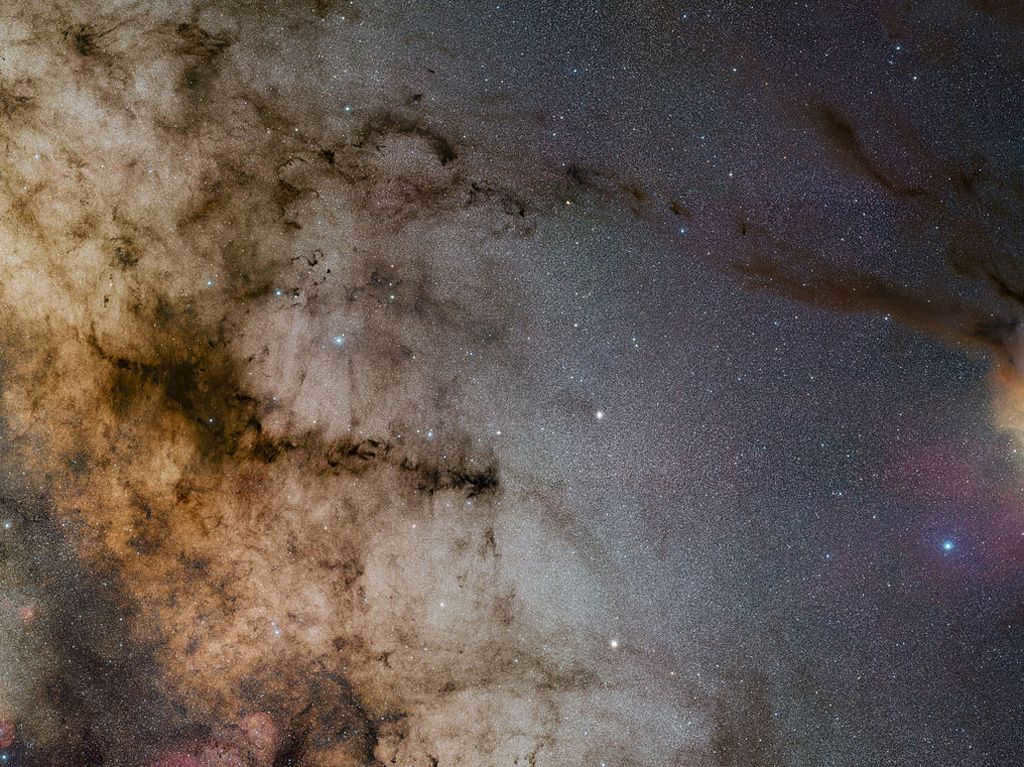
Edward Barnard, the famous American astronomer of the 19th and 20th centuries, was responsible for the organization and description of many dark nebulae, including the renowned Barnard’s Star. Among these dark nebulae is a massive entity known as the Smoking Pipe, which stretches across the sky for nearly 7 degrees – equivalent to 14 times the apparent size of the full Moon! To observe such a large object, it is best to use 10x binoculars.
Another notable dark nebula is Barnard 72, also known as the Serpent Nebula, which exhibits a distinctive S-shaped bend. Additionally, there is the compact and dense Barnard 68, located near the bowl of the Smoking Pipe, in close proximity to the stars theta and 44 of Serpentor.
The Serpentor’s Rho Region
Located near the Serpens constellation and bordering Scorpius, there is a fascinating region known as the Rho region. Within this celestial patch, you can find a collection of dark and reflective nebulae, such as the renowned “Dark River” or Barnard 44. This area also features an emission nebula, the star Antares, and the impressive globular star cluster M4. The sheer beauty of this region has been masterfully captured in countless photographs taken by both amateur and professional astronomers.
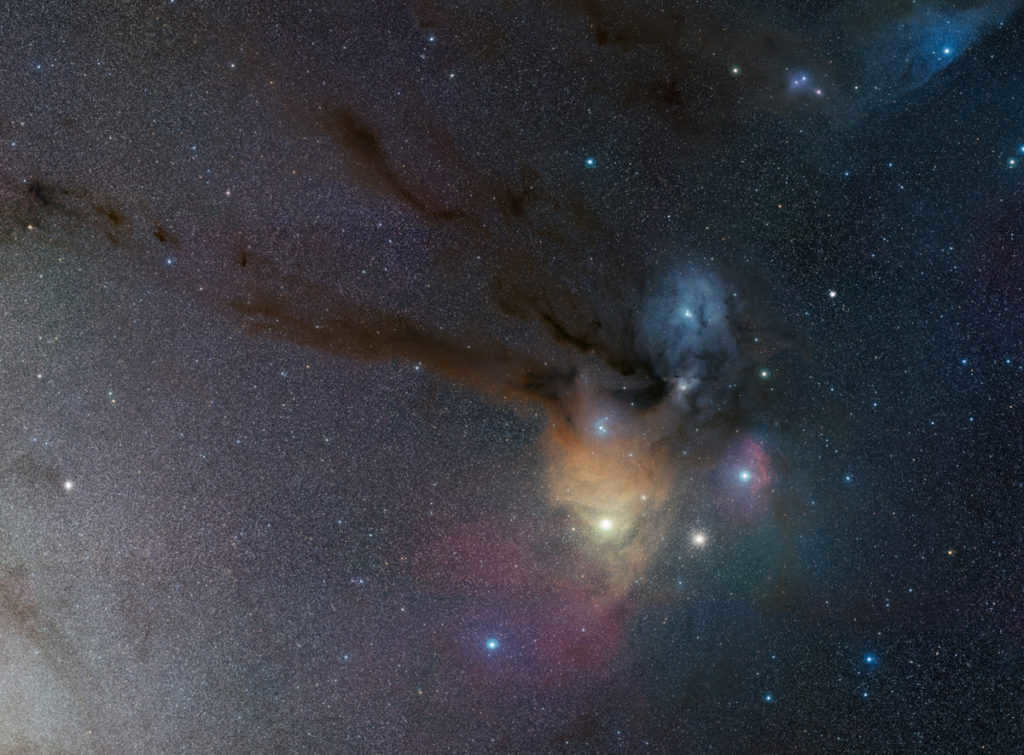
Fascinating Facts about the Serpentine Constellation
Back in 1604, an extraordinary event occurred within the Serpentine constellation – the observation of the last supernova in our galaxy. This remarkable occurrence was meticulously documented by the renowned mathematician and astronomer, Johannes Kepler, and is sometimes referred to as the Kepler supernova.
The precise location of this celestial explosion lies in the southeastern region of the constellation, slightly to the left of the star Xi of the Serpentine. While the remnants of the supernova are nearly undetectable through optical means, they can be observed with great clarity using X-rays. This awe-inspiring spectacle encompasses a vast expanse of expanding gas, originating from the remnants of a star that exploded over four centuries ago.
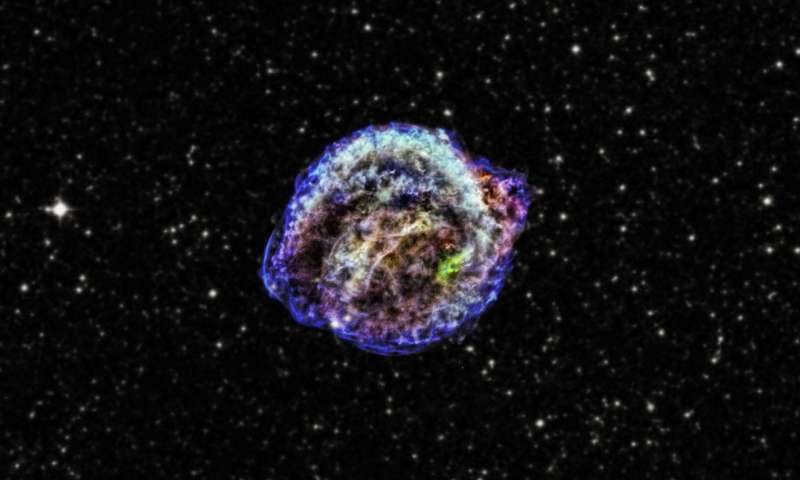
Interestingly enough, over the course of the past millennium, four supernovae have burst forth within our galaxy. However, it is worth noting that all of these occurrences were witnessed prior to the creation of the telescope.

The Serpentine constellation is particularly fascinating and awe-inspiring because it lies along the celestial equator, which is the projection of Earth’s equator onto the sky. Not only that, but it also intersects with the ecliptic, the path that the Sun appears to travel along in the sky.
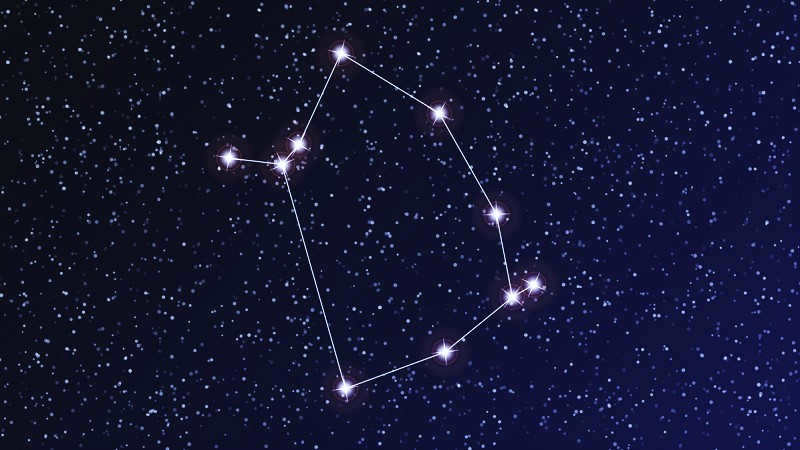

The thirteenth zodiacal constellation is known as the Serpentine. Although it is not officially part of the Zodiac, it has significance in astrology. This is because the axis of rotation and motion of the Sun experiences a constant shift.
As a result, the constellations in the Zodiac only roughly correspond to their respective signs in modern astrology. The Serpentine is actually associated with the zodiacal sign that falls between November 30 and December 17.
In terms of size, the Serpentine is quite large. It divides the neighboring Serpent constellation into two parts. With an area of 948 square degrees, it is the 11th largest constellation. It is also bordered by Libra, Hercules, Eagle, Scorpius, and Sagittarius.
How the constellation Serpentine was formed
Since ancient times, the constellation Serpentine has been well-known. According to Greek mythology, it represents Asclepius, the son of Apollo. As the story goes, Zeus struck Asclepius with lightning in a fit of anger and then placed him in the sky. This happened because Asclepius had the power to revive the dead using medicinal herbs, which he learned from snakes.
Ptolemy included the Serpentine constellation in his star catalog, although it is listed there as Ophiuchos, which means “the bearer of serpents”.

The stars that form the constellation Serpentine.
Let’s explore the primary celestial objects found within this region.
Traditionally, the brightest star in this area is known as Alpha, or Ras Alhage, which translates to “the head of the Serpentine.” It is a binary star consisting of a giant and a dwarf, with an apparent magnitude of 2.07.
In second place is This one, also known as Sabik. Its name means “preceding.” Similar to Alpha, it is a binary star, but composed of dwarf components. It has an average visual magnitude of 2.43.
Next is Zeta, also called Han, which means “two lines.” It is a variable subgiant star with a blue color and an apparent magnitude of 2.57.
At last, Beta — Caelbalrai signifies the constellation located in the upper left shoulder. It possesses a luminosity of 2.76. Both Beta and Kappa are found within the area of massive orange stars. Kappa, specifically, has a visual magnitude of 3.2.
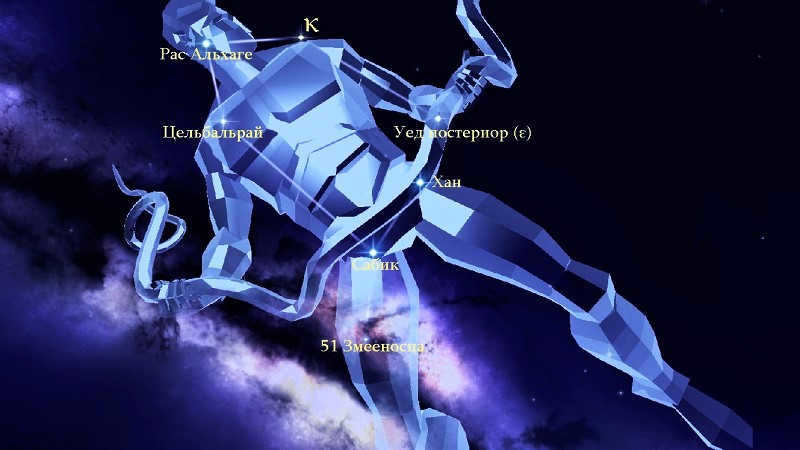
Theta is a multiple system with a brightness of 3.26. It can be seen in the region of the right foot.
Another star in this constellation is Sinistra, which means left foot. It is designated as Nu of Serpentor and has an orange giant with a brightness of 3.33.
Gamma is a white dwarf in the main sequence and has a visibility of 3.75.
Lambda, located at the elbow of the constellation, is a double system. Its visual magnitude is 3.9.
The star Barnard’s star and 12 of Serpentor are both dwarf objects with visual magnitudes of 5.98 and 5.77 respectively.
We can also observe Kepler’s supernova which represents the remains of a supernova explosion.
Importantly, the storyline features a recurring nova known as RS of the Serpentine. It transpires that approximately every two decades, a thermonuclear reaction takes place, causing a star to explode.
Naturally, these celestial elements do not encompass the entirety of the constellation. In reality, we have only included the key ones.
Which celestial objects are found within the Serpentine constellation?
Indeed, this expansive region conceals a multitude of captivating astronomical formations.
For instance, within this territory, one can find globular clusters associated with Messier objects: M9, M10, M12, M14, M19, M62, and M107. However, there are also unaffiliated globular stellar organizations – Palomar 6 and NGC 6304.
Additionally, there are also open star clusters present here, such as IC 4665 and NGC 6633.
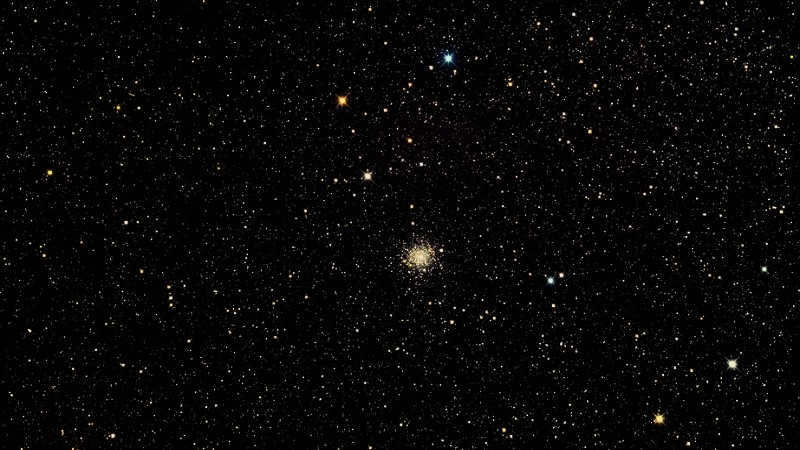


Nebular phenomena
The group of stars known as Serpentor is home to several unique celestial formations, including a few fascinating planetary nebulae: Minkowski’s Butterfly (M2-9), NGC 6369, and NGC 6572.
Another remarkable feature within this constellation is the complex of dust and reflection nebulae known as IC 4603-4604.

The region under consideration contains several noteworthy dark nebulae. One of the most prominent is known as The Great Dark Horse due to its large size and horse-like shape. Within this nebula, there is another fascinating formation called The Tube or Barnard 59, named after its tube-like appearance. This region is also home to an interstellar area known as Snake, which resembles the letter S in English.
Additionally, a dark nebula called Rho of the Serpent can be found in this area. This nebula is a molecular cloud that exhibits noticeable star formation. Notably, it is the closest such region to the solar system.
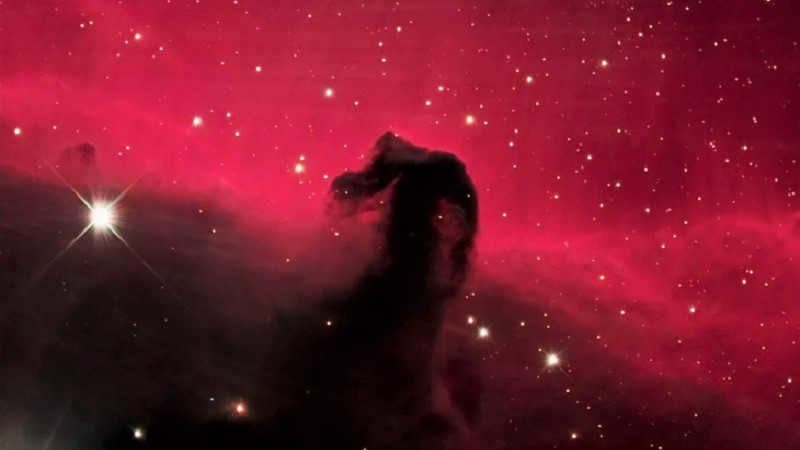
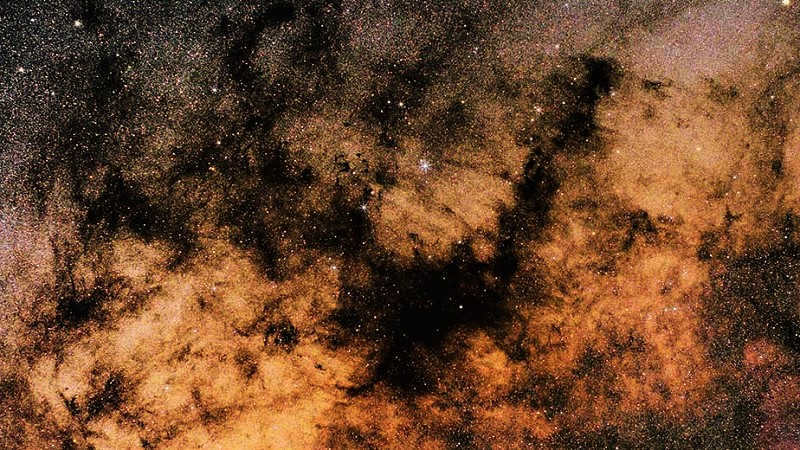
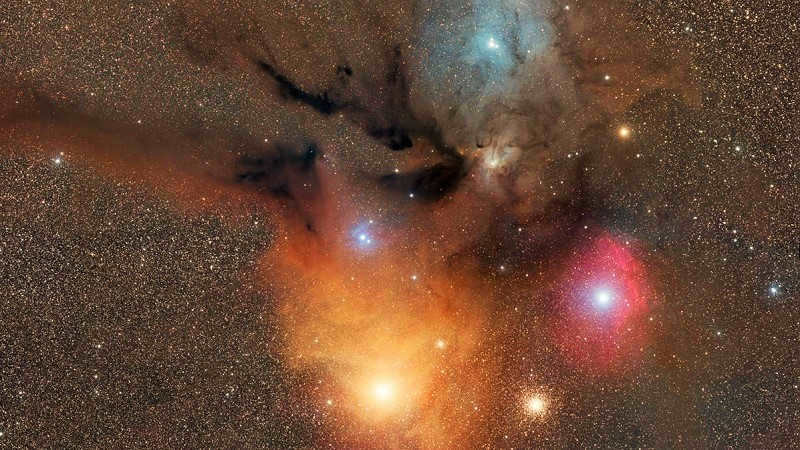
Moreover, the Serpentine constellation encompasses a black, light-absorbing area known as the Barnard 68 molecular cloud. This region contains a high concentration of molecular dust and gas, which causes the absorption of light.
Furthermore, the tracking efforts have identified four different meteor streams: the Ophiuchids, Southern May Ophiuchids, the Northern May Ophiuchids, and the Theta Ophiuchids.
Observation
The area is fully accessible to residents of Russia, with a latitude range of +60 to -75 degrees. However, only the northern parts of the country can observe a portion of it. According to astronomers, the optimal time for observation is in June.
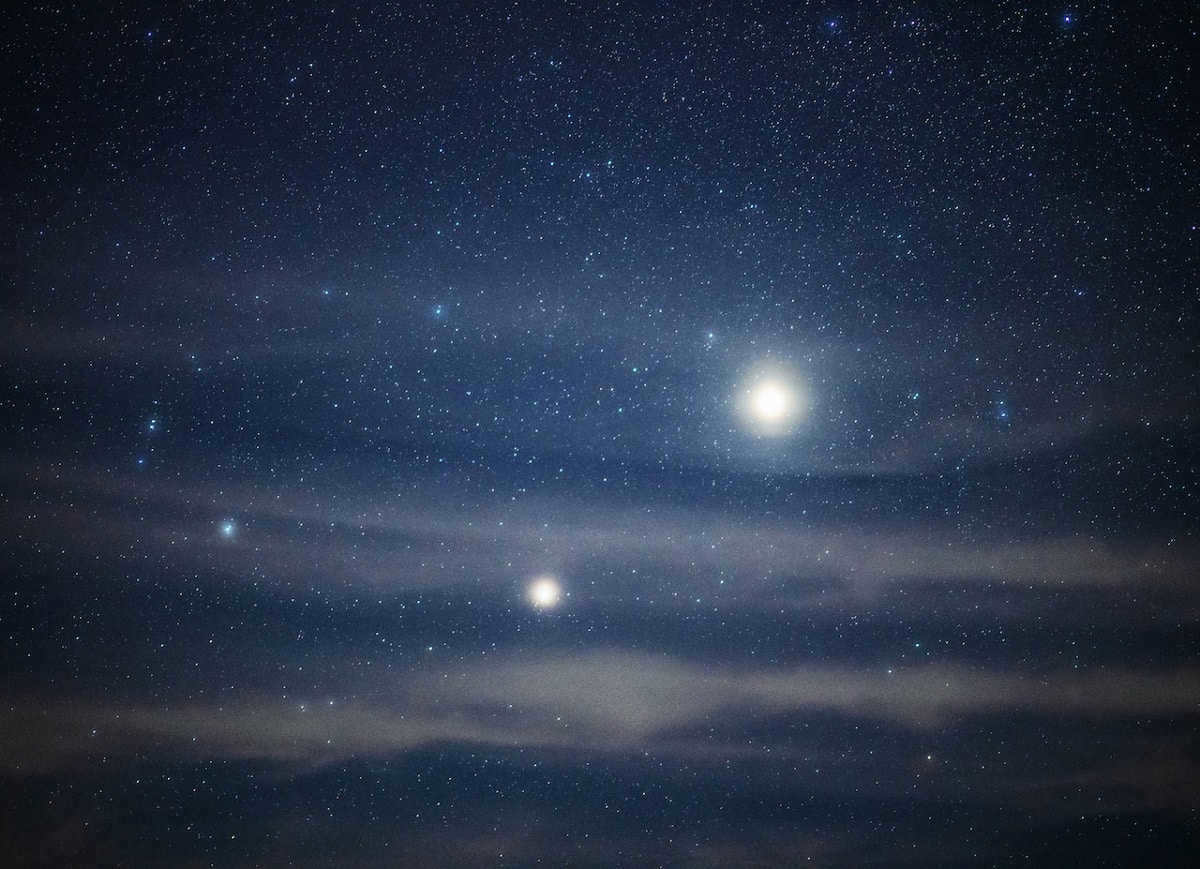
It is common knowledge that there are trillions of stars spread out across the vast expanse of the universe, coming together to form mesmerizing constellations. One of the constellations that never fails to capture our attention is the Serpent constellation. The Serpent constellation is one of the 88 constellations officially recognized by the International Astronomical Union (IAU). Its name is derived from the Latin word meaning “snake tamer”. Situated in the southern celestial hemisphere, it stretches across the celestial equator, making it visible from the northern hemisphere during the summer months as well.
Within this article, we aim to provide you with a comprehensive understanding of the Serpent constellation, including its symbol, defining characteristics, and more.
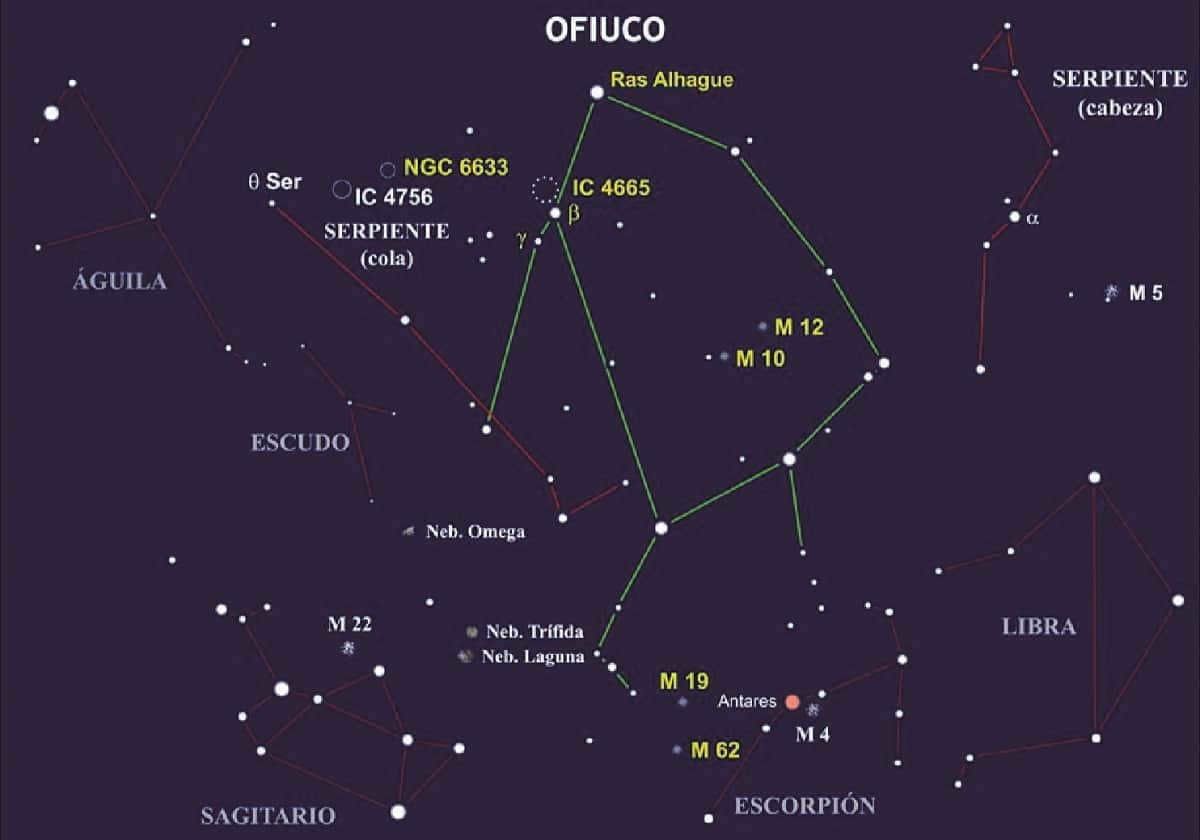
The Serpentine is an exceptional constellation that stands out from the rest, as it is the only one among the zodiac constellations that has not received official recognition as one of the traditional twelve zodiac constellations. However, due to its position on the ecliptic, which is the apparent path of the Sun across the sky, some astrologers have included it in the zodiac and attribute astrological influence to it.
The Serpentine’s symbol is portrayed by a human figure holding a snake, representing the legend associated with the constellation. According to Greek mythology, the Serpentine represents Asclepius, the god of medicine and healing. Asclepius was renowned for his ability to resurrect the dead, which raised concerns among the Olympian gods.
A little background

According to the legend, Zeus, the ruler of the gods, made the decision to eliminate Asclepius by striking him with lightning in order to maintain equilibrium in the realm of the living and the deceased. To honor his medical expertise, Asclepius was immortalized in the night sky as the constellation Serpentor. The serpent he grasps in his hands serves as a symbol of medicine, which is closely associated with Asclepius’ rod that is often depicted with a snake wrapped around it.
Although the Serpentine constellation may not possess the same widespread recognition as the traditional zodiac constellations, its rich history and symbolism make it a subject of fascination for astronomers, as well as individuals intrigued by Greek mythology and astrology.
During ancient times, the Greeks associated it with Asclepius, the demigod who was believed to be the founder of medicine. As the sole son of Apollo and Colonida, he received guidance in medical arts from the centaur Chiron. After Asclepius was killed by Zeus, the gods resurrected him with the condition that he would reside eternally in the heavens. To set him apart from other Olympian legends, he was depicted holding two serpents. These creatures were seen as symbols of rebirth due to their ability to shed their skin and begin a new life cycle. According to Greek mythology, this is how the constellation Serpens came into existence.
Today, the constellation is called Serpentine because the Romans translated the legend into Latin in this way. If you adhere to the Greek tradition, this constellation would be known as Asclepius, the charmer of snakes.
The 13th Zodiac Sign
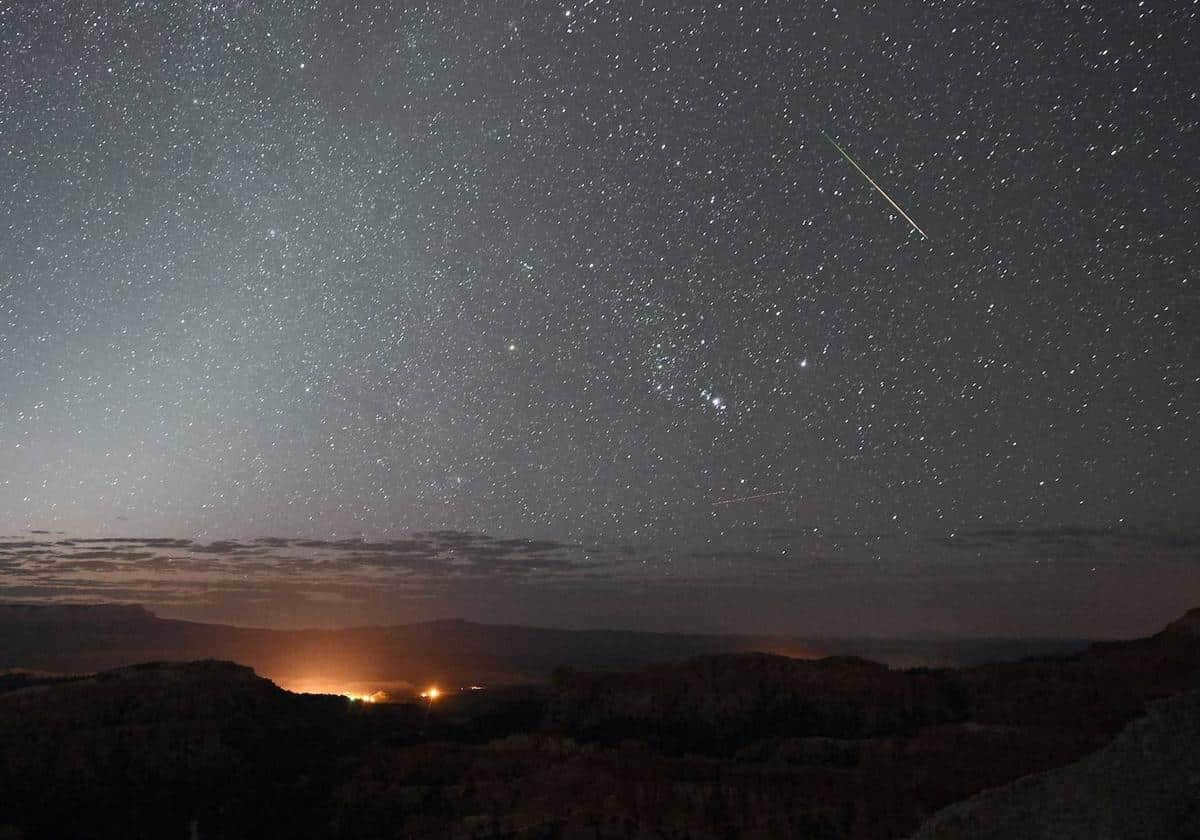
The constellation known as Serpens is a dim yet expansive cluster of stars that can be challenging to observe in areas with significant light pollution. Serpens is also recognized as a zodiac sign, specifically the 13th sign. It occupies a position between Sagittarius and Scorpio, and the Sun traverses through this sign as well. Ancient astronomers utilized the constellations visible before sunrise and after sunset to create calendars and mark the changing of seasons. These constellations were divided into twelve equal parts, with each part representing a separate constellation. Collectively, this grouping is referred to as the Zodiac, with many of the constellations being named after animals.
There are currently 13 known constellations (12 plus the Serpentine) and the amount of time the Sun spends in each of them ranges from 6 to 38 days. While some of these constellations have faint stars, they also possess some exceptionally fascinating ones. The most breathtaking section of this constellation lies closest to the Milky Way, where we are able to observe magnificent star clusters. One particularly captivating star within this constellation is the renowned Barnard’s star, notable for its rapid rotation. In fact, it is the swiftest star in the backdrop of celestial bodies, moving at a rate of 10.3 arc seconds per year. Over the span of 180 years, it covers an apparent size equivalent to that of the full Moon.
The primary celestial bodies in the constellation of Serpentine
Within the constellation of Serpentine, there are numerous captivating and significant celestial bodies. Among them is Rasalhag, also known as Alpha Serpentis. This particular star illuminates the Serpentine with its brilliance and is located approximately 47 light years away from our planet. Rasalhag is classified as a bluish-white star of spectral category A5. Its name is derived from Arabic, meaning “head of the serpent.”
Another notable star within the Serpentine is Sabik, identified as Eta Serpens. Sabik is a binary star, composed of two stars in close proximity to each other. It consists of a giant star classified as A1 and a subgiant star classified as A2. Together, they radiate bluish-white light and are situated around 88 light-years away from Earth. The name Sabik also originates from Arabic, signifying “previous” or “first.”
Aside from the aforementioned stars, the Serpentine harbors a considerable number of fainter stars, which collectively contribute to the splendor and intricacy of this constellation.
As observed, Ophiuko stands out prominently as the thirteenth largest star in the Zodiac constellation, renowned for its exquisite allure. It is my hope that this information enables you to gain further insight into the Serpentine constellation, its symbol, and its characteristics.
This article’s content adheres to our editorial ethics guidelines. To report an error, please click here.
Full Article Summary: Network Meteorology “astronomy” Serpentine constellation
The Serpentine is a constellation that covers a large expanse of the celestial sphere and brings together roughly 160 celestial objects that are visible without the aid of a telescope. In the summer months, it can be observed in the southern region of the sky from our latitudes.
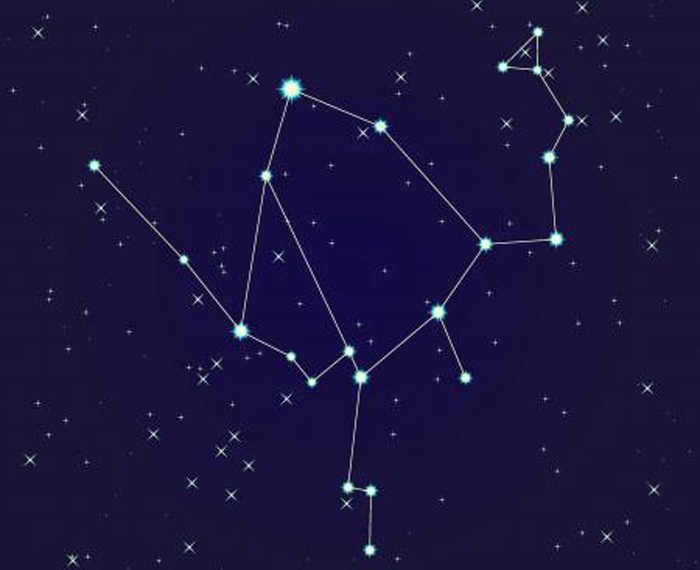
Distinctive Features of the Serpentine Constellation
According to the nomenclature established by the International Astronomical Union, this celestial object is identified as Ophiuchus (or Serpentine in Russian, abbreviated as Oph) on modern star charts.
Here is a list of names discovered in earlier catalogs:
Ranking as the 11th largest constellation in both the Northern and Southern Hemispheres, Serpentine does not contain any objects that shine brighter than a 2-star magnitude.
Serpentine is home to various meteor streams, as well as light and dark nebulae, globular clusters, asterisms, and other captivating astronomical phenomena. Many of its stars are binary, and some are believed to host planetary systems.
Composition of stars
Within the constellation, there exists a multitude of celestial luminaries. With approximately 2,500 objects of varying types, there are only 5 stars that possess a visible luminosity between 2m and 3m.
- Ras Alhage (α Oph) is situated near Ras Algeti (α Hercules) and consists of a system with 2 components.
- Cebalrai (β Oph), also known as the “Shepherd Dog,” is an orange giant located approximately 80 light-years away from the Sun.
- Fate (ζ Oph) is a hot, massive star belonging to the rare spectral class O. It moves through space at an extremely high pecular velocity, resulting in the compression of interstellar space surrounding it.
- Yed Prior (δ Oph) is a variable giant with a reddish hue situated 17 light-years away from our planet. It stands out due to its optical double, ε Ophiuchus.
The stars in the Serpentine are designated with Greek alphabet letters, not based on their brightness, but rather on their spatial position. The Arabic translation of Ras Alhage is “head of the snake catcher”.
This particular star has a high likelihood of being the brightest not only in its constellation, but also among other stars in its category. α Oph has a mass and radius approximately 2.5 times that of the Sun, with a luminosity 25 times greater.
The primary element of this system is a slightly flattened white subgiant at the poles, which has acquired this shape due to its rapid rotation. An orange dwarf, slightly smaller and cooler than the Sun, orbits around the giant in 8.62 years.
RS of Serpentor is a fascinating object to observe. This newly formed star has luminosities ranging from 13.5m to 9.6m and occasionally experiences explosive events with a magnitude drop of up to 5. These outbursts do not occur at regular intervals, with the most recent ones recorded in 1967, 1985, and 2006.
Barnard’s star is located approximately 6 sv years away from the Sun, making it the second closest celestial object to our system after α Centauri.
Due to its extremely high intrinsic velocity and its relatively close proximity to Earth, this red dwarf moves quickly across the sky, earning it the nickname of a “flying” star.
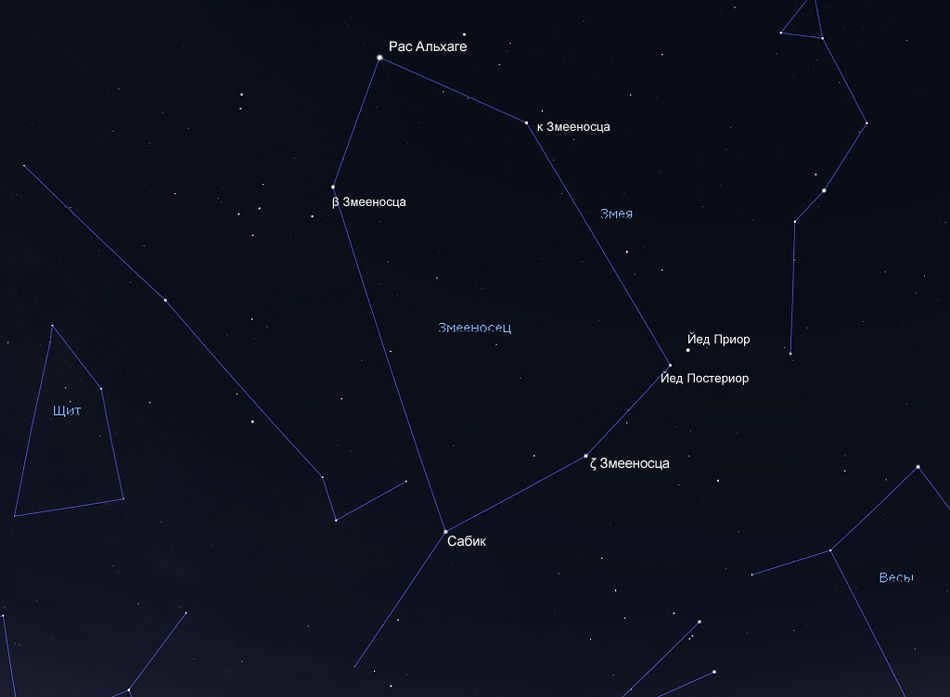
Location of the Constellation
The constellation Serpentine is positioned in between Hercules to the north and Scorpius to the south. It is adjacent to the west and east by the constellation Snake, which is unique in that it consists of two separate parts. In ancient maps, Ophiuchus was often depicted holding a snake in his hands. Additionally, the constellations Libra, Sagittarius, and Eagle can also be found in the same region of the night sky.
The irregular pentagon shape can be seen on the chart to the west of the Summer Triangle, which is formed by the stars Vega (α Lyra), Altair (α Eagle), and Deneb (α Swan).
The top part of the shape consists of the unnamed kappa star in the constellation Serpens, Cebalrai, and Ras Alhage. These stars are not aligned in a straight line – β Oph is on the left, κ Oph is on the right, and α Oph is above them. The bottom line of the pentagon is located along the celestial ecliptic and is formed by the stars Sabik (η), Feit (ζ), ε Oph, and Yed Prior (δ).
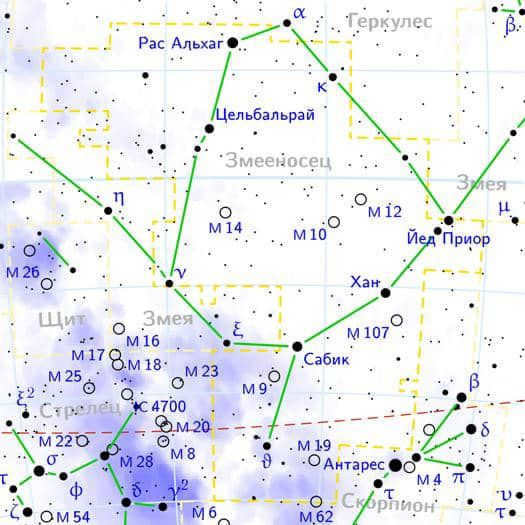
Optimal Observation Times
The Serpentine constellation remains visible in the sky throughout the year, except for a brief period between November 30 and December 17, when it is obscured by the Sun. During the winter months, it can be observed in the early morning hours. From March to April, it is best seen after midnight. In May, it can be observed from late evening until morning. In the fall, it is visible for no more than 2 hours from the western side of the sky.
Despite this, astronomers classify the Serpentine constellation as a summer constellation, as it is easiest to locate and study in June. Ophiuchus, a neighboring constellation, is also prominently visible during the months of July and August. During the summer season, the constellation rises above the horizon and remains visible throughout the dark hours of the day in the southern and southwestern parts of the night sky.
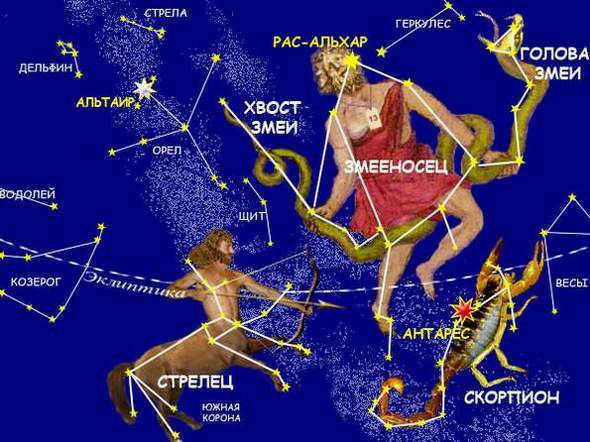
Fascinating information and legends about the constellation
In ancient mythology, the constellation known as Serpens is often associated with the renowned figure named Asclepius (known as Aesculapus in Roman mythology) – a highly skilled healer. According to Greek legend, the god Apollo once fell deeply in love with the beautiful Coronida, the daughter of King Phlegias, and together they had a son with blue eyes and a golden beard.
On one of Apollo’s journeys, when he returned to his beloved, he unfortunately suspected Coronida of being unfaithful to him. In a fit of anger, Apollo shot an arrow at her, causing her demise. However, he spared their son Asclepius and gave him to the wise centaur Chiron, who was an expert in the fields of medicine and healing.
The young man dedicated his time to learning about medicinal plants, successfully treating severe injuries and even acquiring the ability to revive the deceased. He was inspired by an incident where one snake revived another by stinging it. Asclepius, utilizing snake venom, attempted to bring the legendary hunter Orion back to life after being poisoned by a scorpion’s bite.
As a result of Asclepius’ healing abilities, people stopped dying, which displeased Hades, the god of the underworld. Hades voiced his concerns to Zeus, who became furious over the disruption of the divine order and punished Asclepius by striking him with lightning bolts of fire.

However, his memory was not forgotten, and he was revered as a divine healer. Zeus later regretted his actions and immortalized the healer as the Serpentine constellation in the sky, positioned next to Scorpio but on the opposite side of Orion. This prevented Asclepius from being able to resurrect anyone. From that point on, whenever Ophiuchus rises above the horizon, the Orion constellation is obscured behind it.
The history of the Serpentine constellation dates back approximately 2.5 thousand years. During that time, the ecliptic did not intersect this part of the night sky, and the zodiac signs aligned with the existing star clusters.
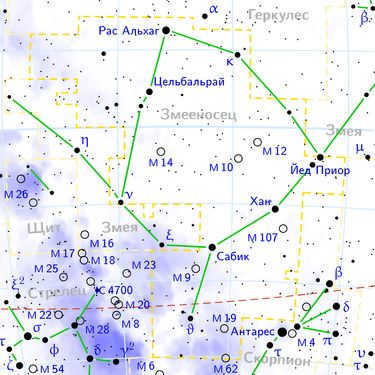
Serpentine is a rather large equatorial constellation, also known as Ophiuchus in Latin.
Description
This constellation is located south of Hercules, with only 5° between their “heads” which are marked by the stars α of Serpentor and α of Hercules. The brightest star in Serpentine is Ras Alhage, which has a magnitude of 2.1. In Russian, the Latin name of the constellation is pronounced “Ophiuchus”, and in the genitive case (Lat. Ophiuchi ) – “Ophiuchi” [1] .
The last observed supernova in our Galaxy occurred in this constellation and was noted by I. Kepler in 1604. Another new star, later designated V841 of Serpens [4], appeared in late April 1848 [2]. This was one of the few new stars discovered from the invention of the telescope until the mid-19th century, possibly the seventh [5], and it flared up near the site of the previous supernova’s outburst.
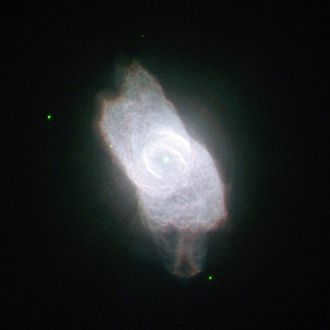
As of 2011, there are over 2500 known variable stars in Serpentor, placing it in the top four alongside Sagittarius, Orion, and Swan in terms of their number [6].
Observation
While Serpentor is not officially recognized as a zodiacal constellation, the Sun is within its boundaries from November 30 to December 17 [7]. The optimal conditions for its visibility are in June. The constellation can be fully seen throughout Russia, except for the northern regions.
Astronomers have made the groundbreaking discovery of new planetary systems forming around nine stars in this constellation [8].
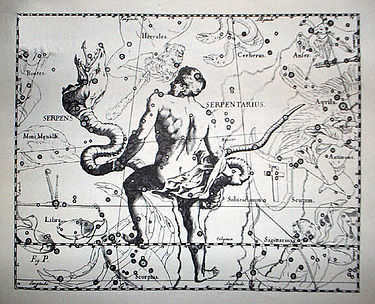
Historical Background
The constellation has a long history. It was first recorded in Claudius Ptolemy’s Almagest catalog, along with 24 stars belonging to this constellation. In ancient times, it was referred to as “Ophiuchos” in Greek (Ὀφιοῦχος), which is now commonly used in Latin notation. This Greek name translates to “carrier of snakes” in Russian and was used as an epithet for Asclepius, the Greek god of medicine [10]. Another known Latin name for the constellation is “Serpentarius” (Lat. Serpentarius Serpentarius), as mentioned in Janus Hevelius’ atlas.
In Greek mythology, Serpentarius is closely associated with the renowned figure Asclepius, who is known as the god of healing. Asclepius, the son of Apollo and the nymph Coronis, was given to the wise centaur Chiron to be raised after Apollo discovered his wife’s infidelity and killed her. Asclepius grew up and developed the bold ambition of bringing the dead back to life, which angered Zeus. As a punishment, Zeus struck Asclepius with lightning and placed him among the stars. Serpentarius is depicted holding a serpent, which is now an independent constellation known as Serpens, unique in that it consists of two separate parts divided by the Serpentarius.
The Serpentor constellation features a cluster of stars known as the Hyades, including 66 Serpentor, 67 Serpentor, 68 Serpentor, and 70 Serpentor. These stars were initially not classified as part of the Serpentine constellation in the Almagest, but were instead described as stars “around the figure of the Serpentine” [9] [11] :234. During a period from 1777, they were even included in the separate Taurus of Poniatowski constellation, which was named after the Taurus constellation that also included the Hyades. However, this separate constellation was later abolished, and its brightest star was 72 Serpens (3.7 m).
Notes
- ↑Tsesevich V.P.. Constellations’ Names // What and how to observe in the sky. – 6th edition. – Moscow: Nauka, 1984. – P. 292-293. – 304 p.
- ↑A newly appeared star in the sky. Contemporary. – Saint Petersburg, 1848. – Vol. IX (June). – P. 162-163.
- ↑Levitan, E. P. “Snake” constellations //. Science and Life. – 1983. – No. 2. – P. 80-83.
- ↑GCVS – V841
- ↑CBAT List of Novae in the Milky Way
- ↑ The table combines the General Catalogue of Variable Stars volumes I-III, 4th edition (GCVS4) (Kholopov+ 1988) and the namelists of variable stars nos.67-80p.1 (Kholopov+, 1985-2011) with improved coordinates. The stars are grouped by the field “Constellation numeric code” and counted. 156 stars without specified coordinates are not included as they are considered repeats.
- ↑Constellations of the zodiac
- ↑Astronomers have observed young solar systems (Russian) , SAO (July 17, 2009). Checked July 17, 2009.
- ↑ 12The complete works of Claudius Ptolemy / Edited by J. L. Heiberg. – 1903. – VOL. I. CH. II. Books VII-XIII. – P. 66-70.
- ↑Ophiuchus // New Encyclopedic Dictionary of Fine Arts. – St. Petersburg, 2007. – Vol. 6.
- ↑Claudius Ptolemy. Almagest / Translated into modern English by I. N. Veselovsky. – Moscow: Nauka, 1998. – 672 p. – ISBN 5-02-015167-X
References
α (Ras Alhage) – β (Celbalrai) – γ – δ (Yed Prior) – ε (Yed Posterior) – ζ (Han) – η (Sabik) – θ – ι – κ – λ (Marfik) – μ – ν – ξ – ο – ρ – σ – τ – υ – φ – χ – ψ – ω – b – c – d – e – f – p – A

